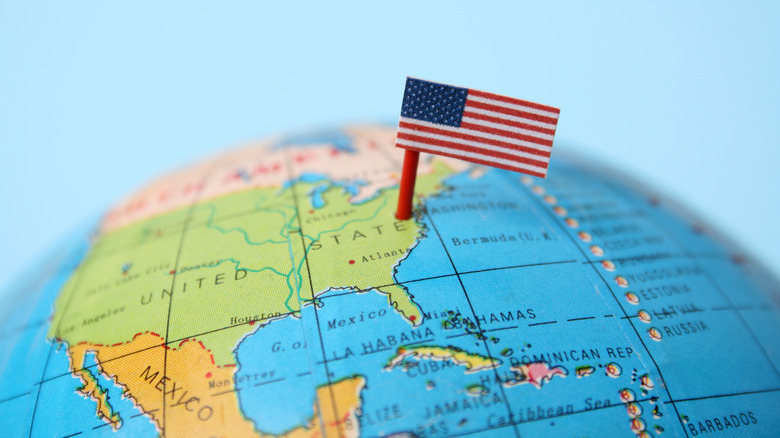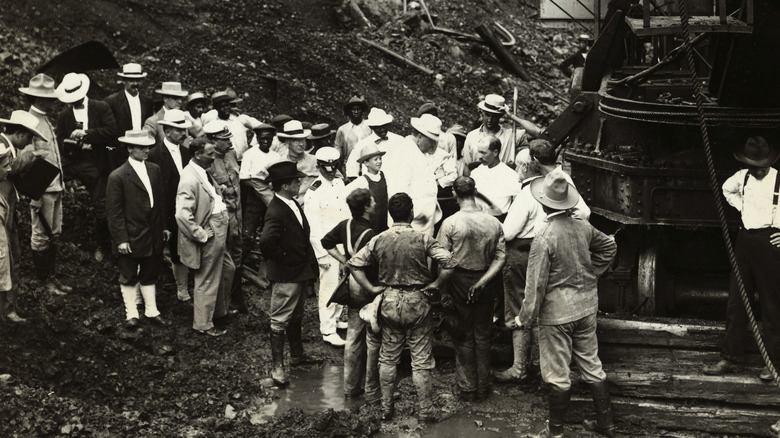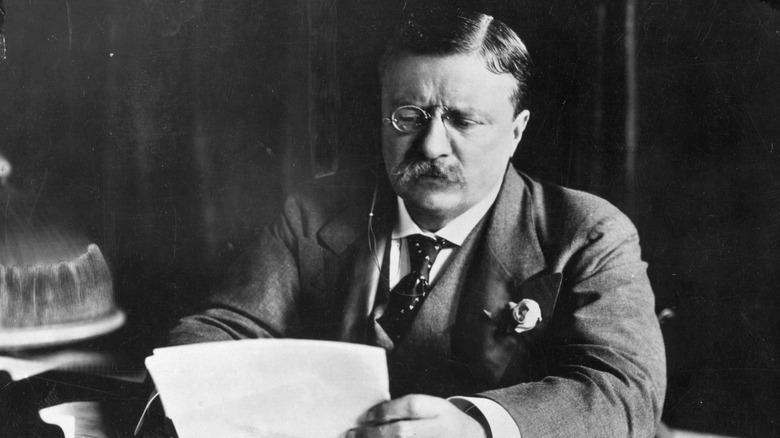This Was The First Sitting US President To Leave The Country
Modern Americans may have a reputation for insularity, but things have massively improved on this front in the last 100 years or more. Although it seems absurd today, there was once a taboo on presidents traveling abroad, and none would dare to tread outside U.S. borders while in office — until 1906.
As Richard Elis writes in his book "Presidential Travel," disappearing across the ocean was once believed to conflict with America's proud history of republicanism. Meetings with monarchs are often accompanied by an arms race of elaborate ceremonial, and this kind of lofty diplomacy just didn't look right for a person who was supposed to be first among equals. Better to stay at home, a world away from the glittering despots of Europe. Only in the 20th century did foreign travel start to become normal — as well as much quicker and simpler. The first president to explore the world outside the U.S. while still in office was Teddy Roosevelt, a man too adventurous to be confined at home. Roosevelt's trip was carefully managed PR-wise, and it quite literally opened up a whole new world for other presidents.
Roosevelt's trip
On the whole, Theodore Roosevelt was an outward-looking president — an interventionist, and a believer in international institutions. Unsurprisingly, he was also the first president daring enough to make that fateful trip across the border. That said, Roosevelt only broke with convention to visit a brand new American territory — the Panama Canal Zone, a small strip of Panama that was sold to the U.S. by Colombia in 1903. Erring on the side of caution, the public was informed that the president would remain in touch with home at all times via telegraph.
Beginning his trip, Roosevelt disembarked on the presidential yacht and sailed down the coast to visit the 10-mile-wide slice of America abroad. For publicity purposes, the president was photographed doing various activities pretty much exclusively in the Canal Zone — including sitting happily on a crane like a big kid. His meeting with the Panamanian president was not mentioned directly in his public itinerary, and perhaps the key to the adventure's success was that it was presented as a humble affair. On one of his days there, the president and his wife even sat down to dine with the canal workers in their canteen.
While in the country, Roosevelt used his pioneering visit for political clout with the Panamanians. In 1906, The New York Times reported that he made a big deal of the fact that Panama had been chosen for the first-ever presidential trip abroad — noting that it was a country he happened to admire.
A whole new world
Although some things about Teddy Roosevelt's political agenda in Panama did attract some criticism, it seemed that most people didn't mind his jaunt abroad. Roosevelt would turn out to be one of America's most adventurous presidents period, and after he left office he traveled all over Africa and South America. With the precedence set, Roosevelt's successor William Taft followed his example and also visited Panama in 1909, 1910, and 1912. In addition to visiting the American territories of Puerto Rico and Cuba, Taft also spent three to four hours south of the border in Mexico.
As silly as it seems now, there was good reason for both Roosevelt and Taft to fear public reprisals. A few years later, Woodrow Wilson's decision to go on the first-ever presidential trip to Europe in 1918 was very poorly received by some. After World War I, Americans had no appetite for foreign interests, and the Republicans even attempted to transfer Wilson's powers to his vice president during his two-month journey. Nonetheless, foreign travel was here to stay — Wilson kept his presidential powers, and many presidents after him embarked on trips abroad.


